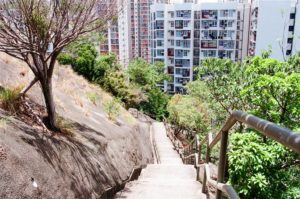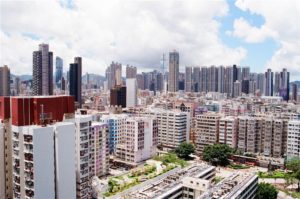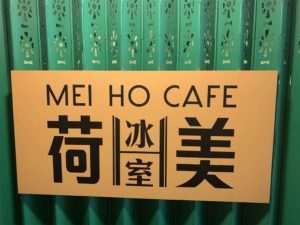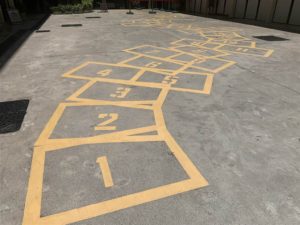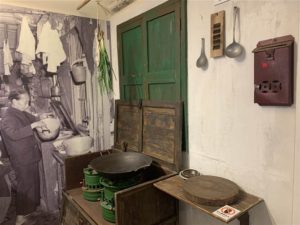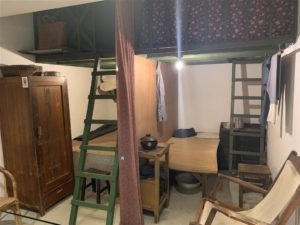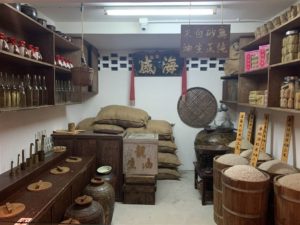Mei Ho House – Food, Views and Heritage
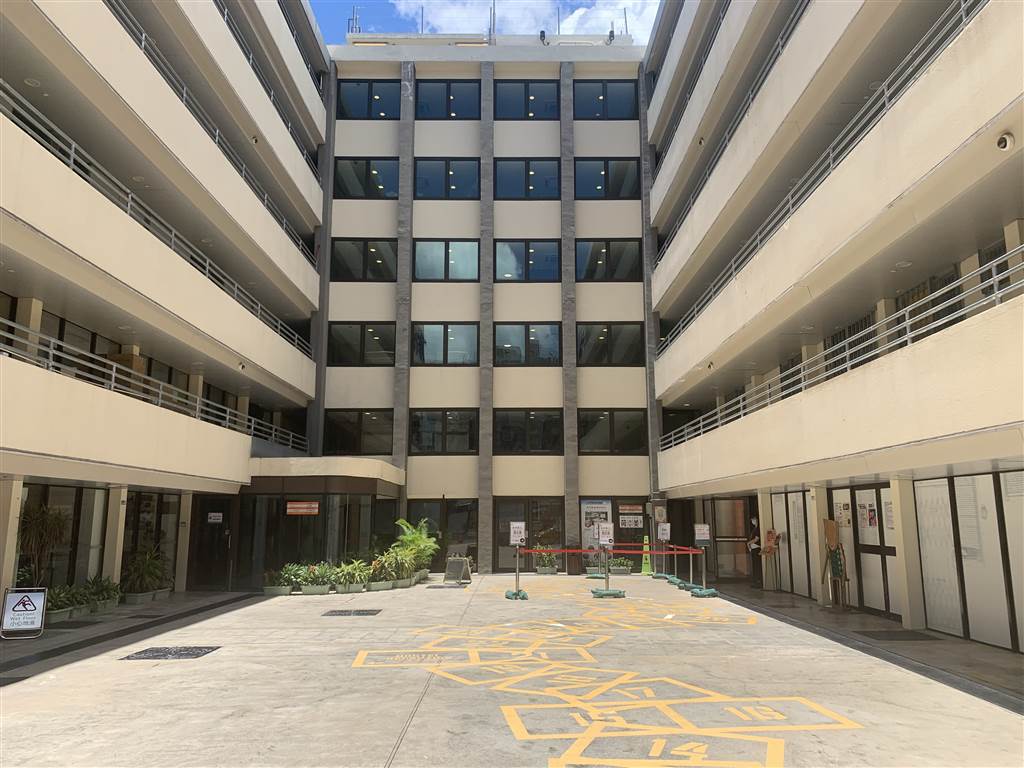
Heritage, history, hiking, and happy dining – we did an all-in-one trip at Mei Ho House in Shek Kip Mei on a sunny afternoon.
Trail at the Back
The original intention of the day was to do a simple walk up the stairs behind Mei Ho House for a panoramic view of western Kowloon. We entered the trail right behind Mei Ho House, and climbed up on a set of long stairs. There were around 300 steps. The open view of urban Kowloon was amazing. We watched the busy world go by its business as we clocked in the little exercise we had to do in order to see this view.
Mei Ho Café
When we passed by the back of Mei Ho House, we had a glimpse of its backyard seating area. Although we walked through the neighborhood’s generous offering of food options, we still preferred the ambiance at Mei Ho House. So we sat down at the Mei Ho Café for a humbly-priced but very satisfying lunch.
It being the attached dining unit to a youth hostel, the Mei Ho Café is clean and hip. Its décor is somewhat Avant Garde, with different chambers showing distinctive colors, themes and furnishings. It certainly was the work of young designers, we thought. The whole dining experience was self-served, from picking up the food after ordering to busing the table after. I am glad to see that my friend did not feel that she was too old for youth hostel life.
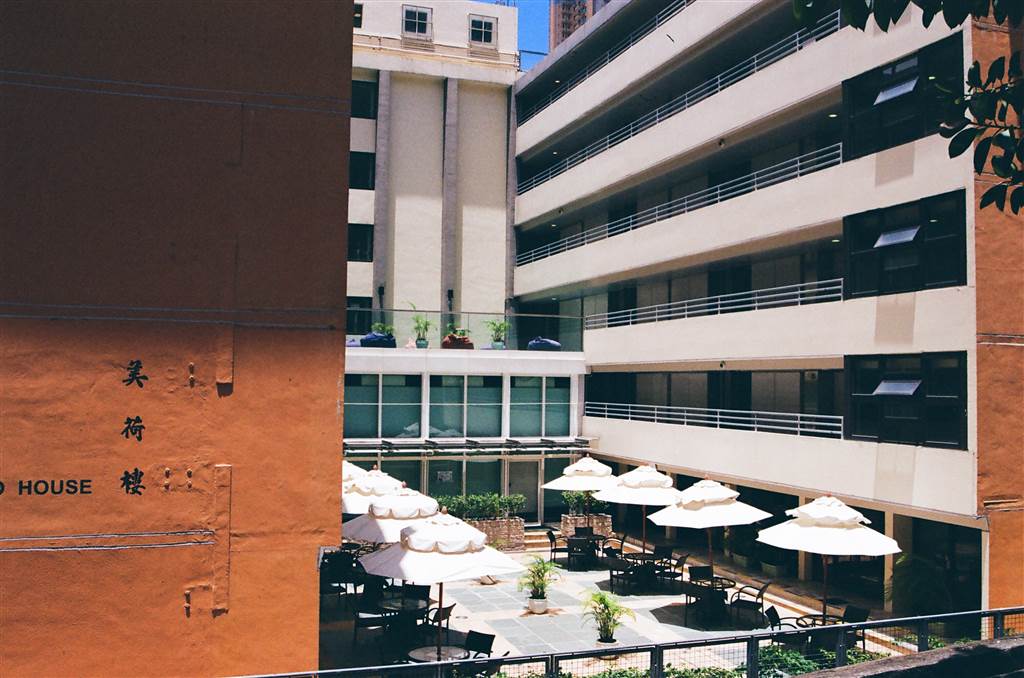
The Great Fire of Shek Kip Mei, 1953
The Mei Ho House was once a public housing estate. In this area of Shek Kip Mei, the early residents lived in the wooden huts of a shanty town during the 1950s, a time when poverty was the norm and survival was the only aspiration. Many of those living in this area were refugees from China’s civil war.
The Christmas day of 1953 brought to the residents of the squatter area an enormous disaster. At around 9:30pm in one home a fire started by an accidental drop of a kerosene lamp. It became uncontrollable within ten minutes. The fire continued and destroyed most of the settlement area well into midnight. More than 53,000 people were on the streets within the short span of a few hours. In 1954, the Colonial Government built Mei Ho House to give home to the tens of thousands of whom the fire rendered homeless.
The Mei Ho House was the resettlement housing that the Hong Kong Government built on the original site of the settlement area. The original resettlement consisted of eight six-storey resettlement blocks (A-H). They were H-shaped structures, which would become the prototype of the earlier public housing projects in Hong Kong. Indeed, the Shek Kip Mei Fire and the resultant government accommodation of residents marked the beginning of the Colonial Government’s general housing policies in Hong Kong. The first projects were public housing estates.
In 2012, Mei Ho House’s Block H stands as the only building that remains on its original site. The Government had plans to revitalize this part of Shek Kip Mei, and Mei Ho House Block H was preserved. It now shines also as the only remaining Mark 1 H-shaped resettlement block in Hong Kong. The Youth Hostels Association now manages the building, providing room and board to visitors as a city hostel. Most importantly, the YHA also oversees the cultural mandate of the revitalized Mei Ho House.
Heritage of Mei Ho House Museum
The petite museum in Mei Ho House creates an unusual cultural space that celebrates the heritage of Shek Kip Mei. The exhibits on the ground level shows the experience of the residents of Mei Ho House. As a collection of their memories, the exhibition shows the spirit of perseverance, resilience and community as residents picked up hope again after a disaster. Perhaps the best known person who lived through this period in Shek Kip Mei is John Woo, the famous movie director. He shot his first experimental film in and appeared on stage for the first time in here. Even when he directed his first commercial production The Young Dragons at the age of 26, he was still living in Mei Ho House, Shek Kip Mei.
The exhibits upstairs consist of restored scenes of the public housing estate during those times. Rooms showed cramped living spaces. The goods of humble neighborhood grocers brought forth a nostalgia for both me and my friend. “Yeah, I remember these scenes.” And then we marveled at Hong Kong’s stellar rise to prosperity in the following few decades. It sits with a vague sense of discomfort that the life we once knew is now part of a proper exhibition in a museum. “Are we really that old?”
Gentle Reminder
The many available curbside spaces in the area would be very tempting for private car drivers but we did get a ticket. When I do go the next time, I certainly will park at the paid garage.
Sources:
The Heritage of Mei Ho House Museum.
The Youth Hostels Association Website(YHA).

